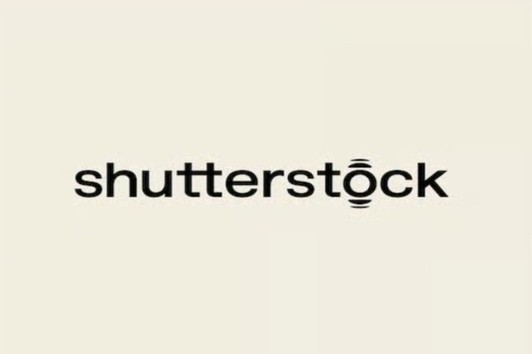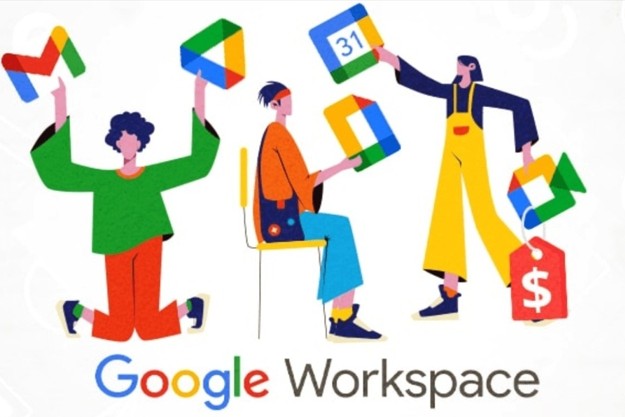Best Selling Products
Shutterstock “Changes Its Shirt” After 20 Years: Not Just Stock Photos But A Creative Ecosystem
Nội dung
Shutterstock has undergone a complete rebranding effort, transforming itself from a traditional stock photo provider into a comprehensive creative partner that meets the needs of modern content production at speed and scale.

For over two decades, Shutterstock has been a household name for anyone working in global media, design, and advertising. As a massive stock photography repository that provides hundreds of millions of images, videos, audio, and graphic assets, Shutterstock has served as more than just a content library; it has also become an integral part of the creative journey for millions of individuals and organizations.
However, in the context of the rapidly changing creative market due to the impact of digital technology and artificial intelligence (AI), Shutterstock understands that simply providing content is no longer enough. Therefore, the company has made a comprehensive "transformation" to reposition the brand, transforming itself from a traditional stock photo provider to a comprehensive creative partner, meeting the needs of content production at modern speed and scale.
1. Repositioning after more than 20 years of leadership
Shutterstock is no longer just an image repository. With its rebranding, the company is setting a new standard for the creative industry. From a provider, Shutterstock now wants to be a partner that helps individuals and organizations create content quickly, intelligently, and with impact.
The rebranding is the result of careful market observation, understanding the growing demand for high-quality creative content that needs to be produced quickly, cost-effectively, and with advanced technology. It is a signal that Shutterstock is adapting and leading the wave of digital transformation in the creative industry.
.png)
2. New logo, new identity
One of the most iconic changes in Shutterstock’s rebranding is the new visual identity that not only “beautifies” the brand, but also tells a clear story about the strategy, vision, and core values that the company pursues in the modern creative age.
Unlike previous visual brand “touch-ups”, this change is invested as a strategic statement, with the focus on the ripple motif, a visual element that plays a central role in the entire new identity system.
The ripple image is more than just an eye-catching graphic detail. It symbolizes the power of creativity that can start with a small idea and amplify into a big impact. Shutterstock describes this in two ways:
The Catalyst is represented as a solid circle, representing the starting point where a spark of an idea is formed.
Impact is a ripple effect that radiates outward, symbolizing the ripple effect that ideas can create when supported by the right tools and platforms.
.png)
Not only appearing as an illustration, the wave motif is also subtly integrated into the official logo, specifically the small wave in the letter “o” of “Shutterstock”. This detail helps the logo become vivid, deep and different in the increasingly crowded world of creative brands.
.png)
The modern sans serif typeface used throughout the new logo was also a deliberate choice. With no elaborate or complex strokes, the typeface feels minimalist, refined, and modern, while improving recognition across all formats, from small mobile screens to large billboards. In particular, sans serif fonts are accessible, suitable for a wide range of audiences: from professional designers to everyday users, from creative agencies to small businesses.
Through its new look, Shutterstock is not just changing its look, but is expressing a new philosophy about its role in the creative industry: more refined, clearer, and always amplifying creative value for users at all scales.
3. New color palette
Along with the logo, Shutterstock has also completely redesigned the brand color palette to bring a fresh, friendly feeling and inspire creativity from the simplest things in daily work life.
While previously, deep red was the dominant color symbolizing power, prominence, and leadership, Shutterstock has now chosen a new “office” color palette: tones inspired by familiar items such as sticky notes, highlighters, and manila folders.
The change is not only aesthetically refreshing, but also emotionally and contextually relevant. In the creative world, ideas often start with a scribbled note, a scribbled sketch, or a picture taped to a board. Drawing colors from these tools makes Shutterstock more approachable, and emphasizes that creativity is not something far away, but a daily, ubiquitous act.
.png)
This new color palette also reflects Shutterstock's creative philosophy:
Realistic but not boring
Simple but inspiring
Honest but always ready to break through
Technically, the chosen tones are also optimal for modern design: easy to display on both light and dark backgrounds, stand out in digital applications, and retain their identity when printed or displayed on video.
4. Integrate artificial intelligence
In a world where AI is changing the way we create content, Shutterstock has demonstrated forward thinking by heavily integrating artificial intelligence technologies into its products and services, not just as an add-on, but as central to its long-term growth strategy.
The most obvious highlight is the launch of two typical service packages:
“Unlimited Downloads” – for individual creators, freelancers, independent content creators. Allows access and use of unlimited resources in Shutterstock's huge content repository at an optimal cost.
“Generative AI Pro” – a real breakthrough for businesses and professional creative organizations. This package integrates Generative AI imaging technology that allows users to create completely new, custom images, with resolutions up to 4K.
Beyond image quality, Shutterstock also integrates a smart recommendation model, trained on billions of content data owned by the company, allowing it to suggest images, styles, and layouts that match the user's goals and behavior. This is a great advantage that helps creators save time searching, while creating more relevant, more personalized content.
.png)
Notably, the AI technology in these packages is developed and integrated with global technology giants such as OpenAI, Amazon Web Services and Google Cloud, ensuring high processing performance, stability and strict data security.
Thanks to this combination, Shutterstock goes beyond the limits of a static image library to become a flexible, proactive, and efficient content production platform. Users don’t just stop at choosing from stock images, but can create exactly the images they need, their way.
5. Comprehensive service
Rebranding means expanding the product ecosystem. Shutterstock is no longer just a photo library, but a creative hub with a full range of services to support the content process from A to Z.
In addition to traditional stock content, Shutterstock also offers:
Studio services support professional photo and video production.
Generative AI engine enables content creation directly on the platform.
The GIPHY advertising network helps convey messages concisely, widely, and emotionally through animated images (GIFs).
All these components are seamlessly connected in one ecosystem, creators only need a single platform to realize their ideas.
6. Historic merger with Getty Images
One factor that cannot be ignored in Shutterstock's transformation is its plan to merge with Getty Images - the largest traditional competitor in the industry.
.png)
If the deal is approved and goes through, the stock photo and digital content industry will see the birth of a “supergroup” – a place that concentrates the world’s largest image, video, AI and digital advertising resources.
Even though the merger is not yet complete, the mere announcement of the plan is enough to make the market realize that the game is no longer about “pretty pictures” but about smart, personalized, high-speed content. In this context, Shutterstock’s rebranding is not just a move in itself, but also a preparation to conquer a new, competitive market.
7. New role, new mission
Shutterstock calls itself the “ Universal Component of Creativity.” What does this mean?
It means Shutterstock wants to be more than just a place for users to come when they need photos, it wants to be the starting point for every creative journey from initial idea to finished, viral content. The company is no longer a static tool, but a dynamic, flexible, and personalized platform.
With the new tagline, Shutterstock wants to serve everyone from graphic designers, advertisers, media companies to AI content developers. And this is becoming more necessary in the context of content becoming a vital factor in every industry.
Shutterstock’s rebranding is more than just a logo or color change. It’s a comprehensive transformation strategy that reflects a long-term vision and a nimble response to an ever-evolving market. With all of these changes, Shutterstock is becoming more than just a photo repository, it’s a powerful tool for individuals, organizations, and businesses on their journey to tell stories, inspire, and create content.












































